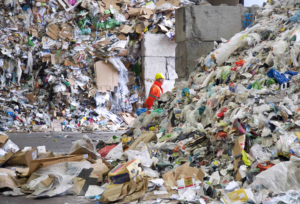Electrician Fort Lauderdale assembles, installs, tests and repairs electrical wiring, fixtures and equipment. They read blueprints and use specialized tools such as voltmeters, ammeters, ohmmeters and drills.

If you are interested in becoming an electrician, you can begin the process by attending a vocational school or community college program. Certificate programs take four months to one year to complete while associate degrees take two years.
An electrician’s job requires a certain amount of education and training. Some people pursue a post-secondary certificate or associate’s degree at a college or trade school before entering an apprenticeship program. Though not required, this step will help distinguish applicants for apprenticeship positions and provide a more solid background in electrical theory and wiring techniques. Coursework typically includes practical applications and study of national code requirements.
Most electricians are trained through a four- or five-year apprenticeship that includes paid on-the-job training and classroom instruction. Apprentices learn basic electrical theory, blueprint reading, mathematics, safety protocols and code requirements. They may also receive specialized training related to soldering, communication or fire alarm systems. Several groups, including unions and electrical contracting associations, sponsor apprenticeship programs. Related work experience can reduce the length of an apprenticeship.
While not strictly required, many aspiring electricians choose to attend a vocational or trade school and complete an associate’s degree in electrical technology or a similar field. These two-year programs allow students to gain classroom experience while working toward a career in the field, and some offer transferable academic credits that can open doors to four-year bachelor’s degree programs.
Regardless of what type of education an aspiring electrician obtains, they should seek out a reputable school that holds accreditation. Accredited colleges meet rigorous standards for student learning and provide a quality educational experience that is recognized by employers and state licensure agencies.
After graduating from a trade or technical school, some aspiring electricians choose to begin an apprenticeship in order to gain hands-on experience in the field. These programs will pair apprentices with a licensed journeyman electrician, who will provide on-the-job training and mentorship.
An apprentice can expect to earn about 2,000 hours of paid on-the-job training each year in addition to classroom instruction. Apprentices will learn about the different types of wire and cable, as well as how to select and install them. They will also be taught about conduit fishing, which is the process of running conductors through conduit runs. This allows them to easily connect and terminate cables when necessary.
Licenses and Permits
An electrician must have a license to perform electrical work in New York. Depending on the type of work you do, you may need to pass an exam and have specific requirements for your licensing. You may also be required to carry certain types of insurance. If you fail to meet any of these requirements, your permit will be suspended or revoked.
Many states require electricians to pass an examination before they are licensed, although it is not always a requirement in cities or towns. The test often covers topics such as electrical wiring, blueprint reading, and building codes. You must also pass a background check to get your license. You can find out more about the licensing process for your specific area by visiting the website of your city or state’s department of buildings.
You may be able to obtain your license by working under a master electrician for several years before taking the exam. Some states have a multi-stage licensing process that begins with a journeyman and ends with a master electrician. In some states, you must also pass a business exam and trade exam before becoming a master electrician.
In New York, you must have a Master Electrician or Special Electrician license to request construction permits for electrical work. In order to be issued this license, you must have a minimum of four years of experience as a journeyman electrician or show 8,000 hours of work in the trade. You can also substitute a year of coursework in an electrical curriculum for half a year of experience.
Obtaining your permit is essential for all electrical work, and the city will often refuse to issue a building permit if you do not have a valid licence. Obtaining a licence can help to build trust and credibility with clients and customers, as it proves that you follow industry standards and take your responsibility seriously. It can also open up opportunities for larger projects and help you grow your business.
It is important for all electrical contractors to keep up with the latest technology and trends in the field. This can improve your quality of work, increase efficiency and improve safety. The latest software can make it easier to read electrical schematics, which will save you time and money on your project.
Work Environment
Depending on the electrician’s specialty, work can be performed both inside and outside. It may involve working in cramped or high spaces, and it’s essential to be able to climb ladders when necessary. Because of the risk of electrocution, it’s important to wear personal protective equipment, such as rubber-insulated sleeves and gloves, when working with electricity. Electricians also need to have the ability to read blueprints and other technical documentation.
In addition, electrical workers often need to communicate with supervisors or customers in order to understand the details of the work needed, determine cost estimates and schedules, and explain complicated systems. This is a good career choice for people who enjoy hands-on physical work and prefer not to be stuck behind a desk all day.
Electricians can choose to work through a company or independently. The latter option usually leads to more flexible scheduling, which can include working nights, weekends and holidays, in order to meet client needs and deadlines. However, this type of job is less stable and often doesn’t pay as well as one with a steady employer.
Some electricians work in industrial settings, where their workplace can involve large machinery and high-voltage electrical systems. This can be a hazardous environment and requires specific training, apprenticing or apprenticeship to work safely. Industrial electricians often work in collaboration with maintenance staff or engineers to ensure uninterrupted production and safety.
Most electricians work between 30 and 40 hours a week, with the possibility of overtime. They can also choose to be on-call, which provides the opportunity for extra income and allows them to respond quickly to emergencies. They must be available at least 24 hours a day, but it’s important to remember that the potential hazards of this field make it a dangerous place to be even when they aren’t on call.
Job Duties
Electricians install, maintain and repair electrical wiring, systems and fixtures. They may work on new construction projects as well as in existing buildings. They also troubleshoot electrical problems. Depending on the size of the job, electricians often collaborate with other professionals like plumbers and carpenters.
Typical job duties of an electrician include drilling holes and setting anchors to support conduit, measuring and fabricating, and installing wires, outlets, switches and other components. They must be able to read and follow technical diagrams, schematics and blueprints. They are also required to test and connect circuit breakers and other hardware to wiring and power lines. They must also keep up to date on the latest revisions of electrical codes and safety regulations.
Some electricians specialize in the maintenance of residential wiring, while others focus on commercial and industrial jobs. Some even work on outdoor spaces, such as patios and lawns. These jobs require the ability to work from ladders, scaffolding and roofs. Other responsibilities involve placing and connecting ground leads and installing electrical devices, such as fuses and transformers.
It is essential for electricians to stay up-to-date with the latest equipment and tools. Many of these tools are heavy and can cause serious injury if they are not used properly. Using the proper safety protocols is essential for these workers, and they are usually required to attend training sessions.
Some electricians move up to mid-level management positions or become supervisors. This is a great way to advance your career and make more money. However, it is important to remember that these roles are hands-on and don’t offer much flexibility to work from home. Getting to a senior-level position requires significant experience in the field of electrical work, as well as leadership skills. If you are interested in moving up the ladder, try networking with other electricians in your field to find out about new opportunities and stay abreast of current trends. It is also a good idea to pursue educational opportunities, as they can help you improve your skills and increase your chances of promotion.
